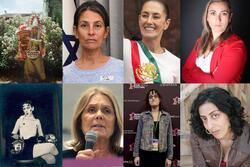Book Review: The Marriage of Opposites
Reading Alice Hoffman’s The Marriage of Opposites, words like “lush,” “vivid,” and “lyrical” spring to mind, which is pretty amazing when you consider that historical fiction usually runs the risk of feeling stilted, boring, or just plain wrong. It’s probably the hardest thing a writer can tackle. First, you have to do a ton of research to make sure you get all the fiddly little details right. Then you have to winnow them down to immerse the reader in a setting very different from their own world without making them feel bombarded by all that minutia. And if you’re using real historical figures, as Hoffman does here, you also have to stay true to the facts of what happened (even if the characters in your head want to run off in a totally different direction) without making their actions seem forced. Oh, and on top of all that, tell a story that actually resonates and makes the reader ache every time the characters suffer. Here, Alice Hoffman does all of that so well that you just get sucked into the story of a young Jewish girl fighting for the right to live her own life in the surprisingly restrictive world of the nineteenth-century Virgin Islands.
Alice Hoffman bases her story around Rachel, the mother of impressionist painter Camille Pissarro, and her scandalous marriage to the nephew of her dead husband, a love that caused their expulsion from the Jewish community of St. Thomas. Hoffman takes that intriguing bit of gossip and cracks it open to reveal a whole, complex world of family squabbles, painful secrets, rigid social conventions, the economic network of the Caribbean and the gorgeous (and occasionally deadly) landscape of the island of St. Thomas. The characters come to life as well, particularly the willful Rachel, her lifelong best friend, Jestine, and her formidable mother, Madame Pomie.
I have to confess, I’m a sucker for family stories. No one can push your buttons like the people who installed them. And Hoffman delivers on that score as Rachel pits herself against her mother’s will again and again, sometimes fiercely victorious, sometimes outmaneuvered and ground down. She then finds herself navigating a completely different family dynamic when she marries a widower who is still haunted by the memories of his beloved first wife. And finally, and most painfully, Rachel becomes a parent herself and finds herself repeating old patterns, becoming the things she hated most about her mother, even as she uncovers old secrets that reveal her mother was once a lot like her.
Adding to the complexity, Hoffman pulls off a nice little trick by having the section where the lovers meet told from both characters’ perspectives, creating a sense that either their souls are so intertwined that they can’t tell where one of them leaves off and the other starts, or that this is a story they’ve both told so many times that they’ve lost track of which parts properly belong to which person.
But for me, the real joy of the book is the original characters, especially Jestine, who suffers the consequences of her own doomed love affair with Rachel’s cousin. Jestine feels so real that she makes me wonder where the facts of the story end and the fiction begins, and any novel that makes me want to poke through obscure historical records in a language I don’t understand is doing something right.
But that dance of fact and fiction does lead to some sour notes throughout the book. It takes a while for the story to get going as Hoffman tries to establish the world. (Do we really need to know the year-by-year shifts in population for the island?) Hoffman also struggles to portray Rachel realistically before she reaches maturity; there are a couple of scenes when she first marries where she shows a wisdom about relationships and a mature wit that feels inconsistent with the character as a teen who has never been alone with a man before. And there are several places where the historical Rachel did things that make no sense for the Rachel that Alice Hoffman has created, leading to a moments where Rachel either does something painfully out of character or suffers a kind of emotional fugue to explain two contradictory actions right on top of one another. It’s frustrating because the rest of the novel is so skillful that the problems really stand out.
Despite this, I found myself totally absorbed by the world Hoffman had created, and found myself searching through Pissaro’s art to see if I could glimpse hints of the novel’s characters and mood in his gorgeous paintings. And I found myself lingering over the last few chapters, eager to find out how it ended but reluctant to let go of the characters. The Marriage of Opposites is going to stay with me for a long time to come.







